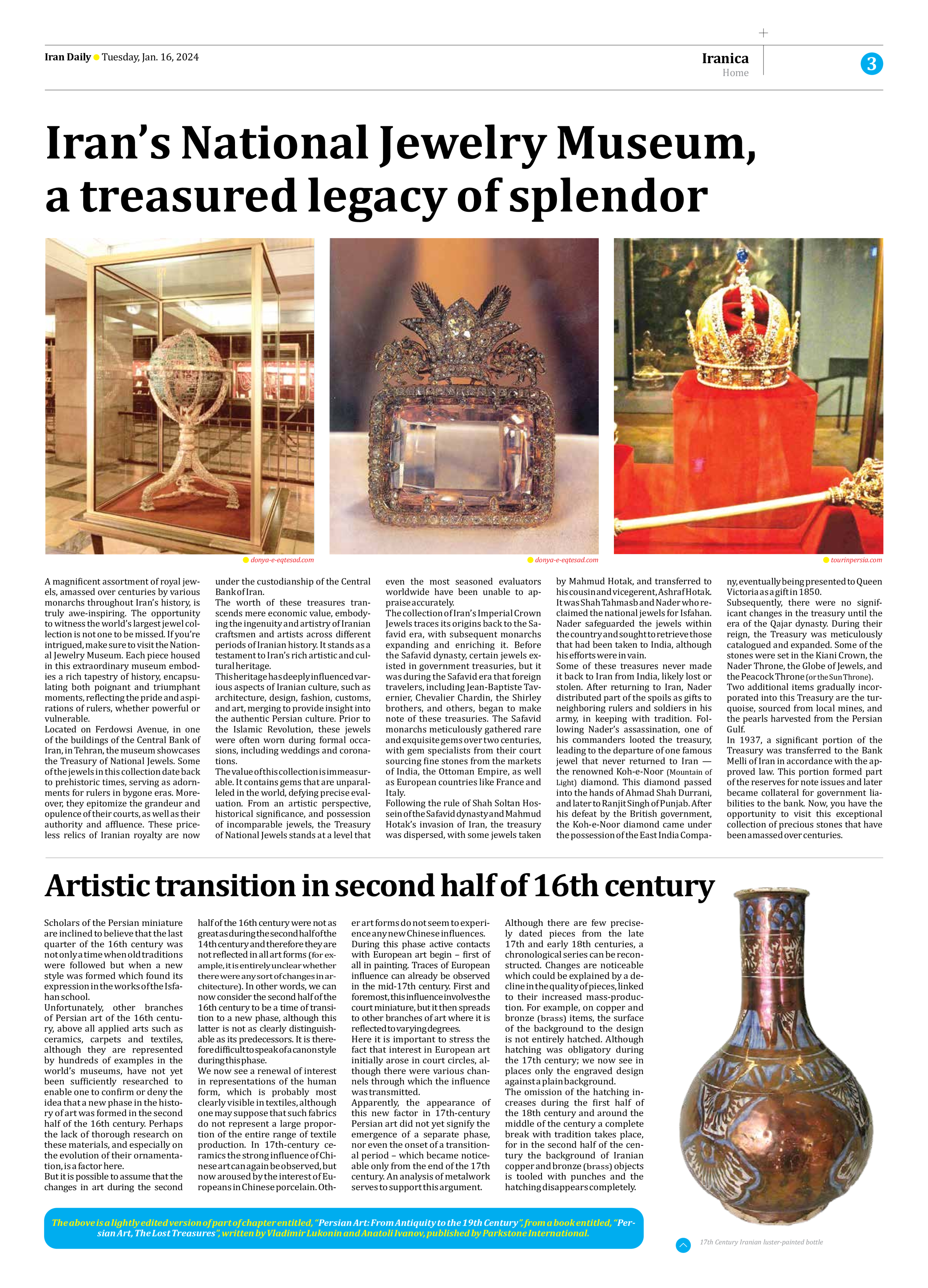
Artistic transition in second half of 16th century
Scholars of the Persian miniature are inclined to believe that the last quarter of the 16th century was not only a time when old traditions were followed but when a new style was formed which found its expression in the works of the Isfahan school.
Unfortunately, other branches of Persian art of the 16th century, above all applied arts such as ceramics, carpets and textiles, although they are represented by hundreds of examples in the world’s museums, have not yet been sufficiently researched to enable one to confirm or deny the idea that a new phase in the history of art was formed in the second half of the 16th century. Perhaps the lack of thorough research on these materials, and especially on the evolution of their ornamentation, is a factor here.
But it is possible to assume that the changes in art during the second half of the 16th century were not as great as during the second half of the 14th century and therefore they are not reflected in all art forms (for example, it is entirely unclear whether there were any sort of changes in architecture). In other words, we can now consider the second half of the 16th century to be a time of transition to a new phase, although this latter is not as clearly distinguishable as its predecessors. It is therefore difficult to speak of a canon style during this phase.
We now see a renewal of interest in representations of the human form, which is probably most clearly visible in textiles, although one may suppose that such fabrics do not represent a large proportion of the entire range of textile production. In 17th-century ceramics the strong influence of Chinese art can again be observed, but now aroused by the interest of Europeans in Chinese porcelain. Other art forms do not seem to experience any new Chinese influences.
During this phase active contacts with European art begin – first of all in painting. Traces of European influence can already be observed in the mid-17th century. First and foremost, this influence involves the court miniature, but it then spreads to other branches of art where it is reflected to varying degrees.
Here it is important to stress the fact that interest in European art initially arose in court circles, although there were various channels through which the influence was transmitted.
Apparently, the appearance of this new factor in 17th-century Persian art did not yet signify the emergence of a separate phase, nor even the onset of a transitional period – which became noticeable only from the end of the 17th century. An analysis of metalwork serves to support this argument.
Although there are few precisely dated pieces from the late 17th and early 18th centuries, a chronological series can be reconstructed. Changes are noticeable which could be explained by a decline in the quality of pieces, linked to their increased mass-production. For example, on copper and bronze (brass) items, the surface of the background to the design is not entirely hatched. Although hatching was obligatory during the 17th century; we now see in places only the engraved design against a plain background.
The omission of the hatching increases during the first half of the 18th century and around the middle of the century a complete break with tradition takes place, for in the second half of the century the background of Iranian copper and bronze (brass) objects is tooled with punches and the hatching disappears completely.
The above is a lightly edited version of part of chapter entitled, “Persian Art: From Antiquity to the 19th Century”, from a book entitled, “Persian Art, The Lost Treasures”, written by Vladimir Lukonin and Anatoli Ivanov, published by Parkstone International.







